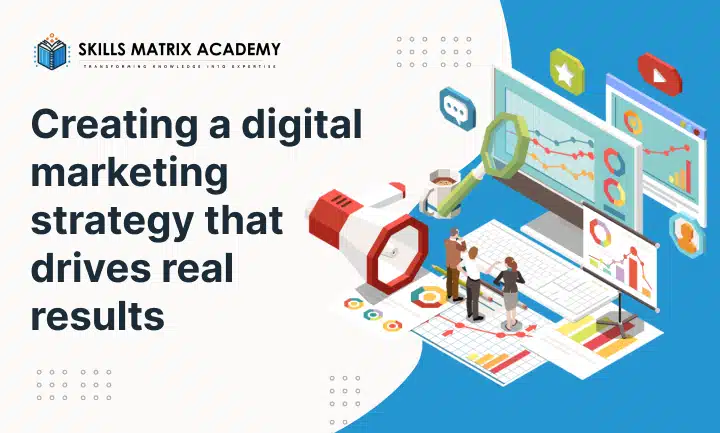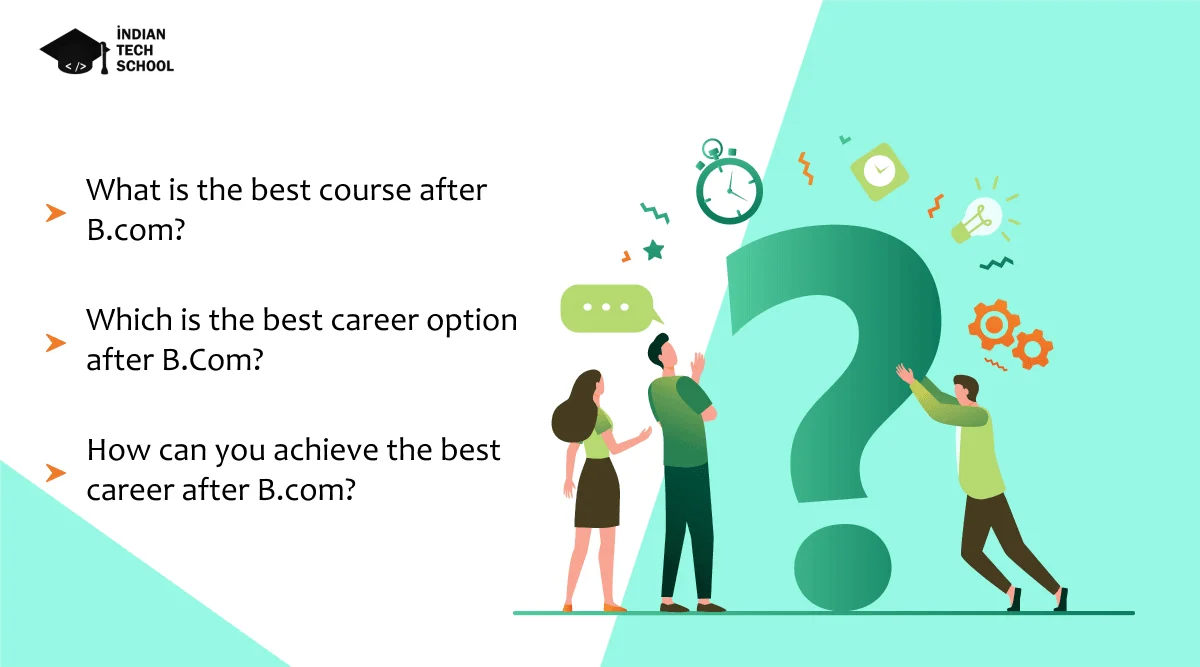What Is a Digital Marketing Strategy?
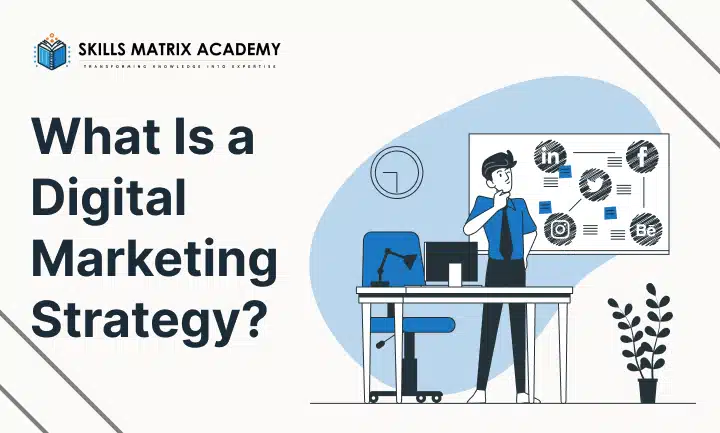
A Digital Marketing Strategy is a long-term plan designed to achieve specific business goals. It sets clear objectives, identifies target audiences, and provides a framework for all marketing activities across digital channels such as websites, social media, email, and search engines.
At its core, a strategy answers two questions:
- What are we trying to achieve?
- Why does this matter?
A strong strategy forms the foundation of every marketing effort. Without it, campaigns and tactics can become unfocused and less effective.
The Core of a Digital Marketing Strategy
A successful digital marketing strategy works in layers: strategy, campaigns, and tactics. Each part plays a specific role to ensure every marketing effort aligns with your business objectives.
Strategy
The strategy sets overarching goals and priorities. It aligns your marketing activities with the company’s broader goals.
Campaigns
Campaigns are time-bound initiatives that target specific goals. They bring the strategy to life in measurable steps. Each campaign has a start and end date, clear objectives, and key performance indicators.
Tactics
Tactics are actionable steps executed within campaigns. These include:
- Creating social media posts.
- Running paid ads.
- Publishing blog content.
- Sending email newsletters.
This layered structure ensures your strategy works efficiently and every action counts.
Why Have a Digital Marketing Strategy?

A Digital Marketing Strategy is essential to survive in competitive markets. Without one, your brand risks losing relevance. Today, staying active online is crucial for growth and visibility.
As the popularity of digital marketing grows, more businesses study the advantages of online marketing over traditional advertising. Channels like radio, newspaper, and television are becoming less effective compared to digital approaches.
The biggest reward? You can now reach a global audience. With the right strategy, you can come and convert customers while keeping your workflow organised.
Many brands today are moving away from traditional advertising. Instead, they adopt digital marketing strategies that focus on:
- Brand storytelling
- Organic engagement
- Viral marketing
This shift is driven by the need to connect with audiences more meaningfully. Digital channels allow brands to tell their story directly to consumers in ways that traditional media cannot.
Importance of Digital Marketing Strategies

The importance of digital marketing strategies is growing every day. For businesses, planning and executing these strategies is essential to remain competitive. Without them, growth becomes uncertain.
A strong strategy helps businesses define clear goals, streamline processes, and measure results effectively. The benefits are significant and impact every aspect of business growth.
Key Benefits of Digital Marketing Strategies
Here are the main advantages businesses gain when they plan and execute digital marketing strategies successfully.
1. Reach
Digital channels give access to a global audience. This expands market reach beyond a physical office. Businesses can now connect with customers anywhere, increasing their growth potential.
2. Cost-Effectiveness
Compared to traditional marketing methods, digital marketing strategies provide affordable options. This helps businesses maximize their marketing budget and get better returns.
3. Targeting
Advanced targeting lets businesses connect with the precise demographics, interests, and behaviours of customers. This improves the effectiveness of marketing efforts and minimises wasted spend.
4. Engagement
Digital platforms enable direct communication with end customers. This fosters deeper engagement and builds lasting relationships that increase brand loyalty.
5. Analytics
Digital marketing strategies offer detailed analytics. Businesses can track ROI, adjust strategies in real time, and improve performance consistently.
6. Adaptability
The digital space changes quickly. Strong strategies make businesses more competitive and adaptable in changing environments.
How to Build a Digital Marketing Strategy
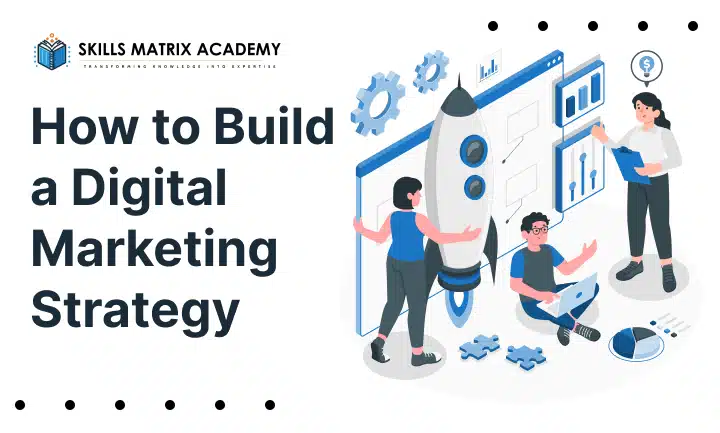
How to build a digital marketing strategy is a crucial question for modern businesses. Crafting a digital marketing strategy involves clear, structured steps to align with business objectives and ensure measurable success.
A strategy transforms random marketing actions into focused, results-driven campaigns. This guide explains key steps to build a plan that delivers impact.
1. Set Goals and Objectives
Start by defining your goals and objectives. They must align with your broader business objectives and act as clear benchmarks.
Use the SMART framework to make goals:
- Specific
- Measurable
- Attainable
- Relevant
- Timely
Example:
- Goal: Increase awareness of widgets among the target audience.
- Strategy: Use content marketing to create material for two buyer personas at each stage of the sales funnel.
- Objective: Achieve a 25% increase in downloads of widget guides quarterly and grow email subscribers by 50% in six months.
2. Consider Buyer Personas
Knowing your audience is vital. Build detailed buyer personas based on solid data and research to make marketing more effective.
Key persona elements:
- Location: Use analytics to know where customers shop.
- Income/Occupation: Use surveys or forms to gather insights.
- Interests/Goals: Learn about hobbies, aspirations, and pain points through focus groups or reports.
Buyer personas ensure your marketing connects with the right people.
3. Audit Your Assets
Check your digital assets to find strengths, gaps, and areas for improvement. Audit your content for effectiveness.
Steps:
- Crawl your site: Collect all URLs for blogs, category pages, and other assets.
- Identify gaps: See what content or features are missing for your audience.
- SEO insights: Review keyword data to find optimisation opportunities.
An audit sets the stage for a stronger, smarter strategy.
4. Plan Your Content Creation Resources
Good campaigns need great content. Plan its creation, delivery, and management.
Plan for:
- Budget: Know your financial resources for production.
- Resource allocation: Decide if work is in-house or needs outsourcing.
- Technology: Use tools like project management software or design platforms.
- Deadlines: Set realistic timelines to keep everything on track.
Clear planning makes campaigns smooth and effective.
5. Pinpoint Your KPIs
Track measurable outcomes to check your strategy’s success. Pick key performance indicators (KPIs) that match your objectives.
Examples:
- Digital conversion rates
- Cost per lead
- Returning website visitors
- Engaged visit rates
- Click-through rates
- Marketing qualified leads (MQLs), sales qualified leads (SQLs), and bookings
- Customer lifetime value
KPIs help you track progress and improve results.
What Are the Most Effective Digital Marketing Strategies?
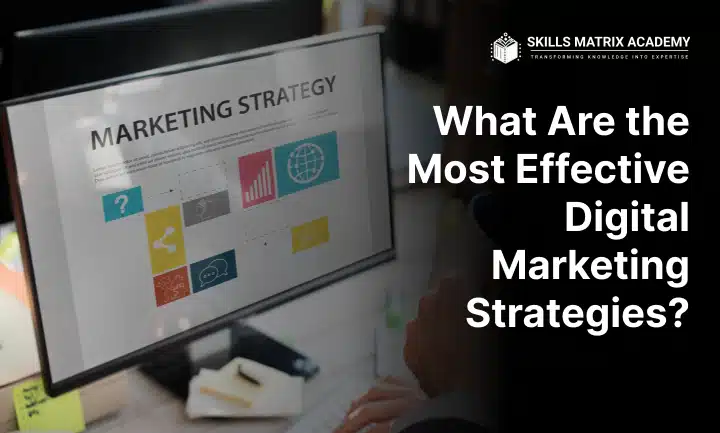
The digital marketing strategies you choose depend on your business’s needs and goals. Whether you aim to grow leads or build brand awareness, your plan must align with your brand and message.
Here, we share proven strategies that help build online visibility and generate leads effectively.
1. Content Marketing
Content marketing is a powerful method for generating leads. It involves creating valuable content and sharing it through digital channels to attract your audience.
For example, you can link an Instagram post to a special offer via a landing page. This increases your conversion potential. A simple example is promoting a gated ebook relevant to your audience, collecting visitors’ details.
Don’t rely on one content type. Mix different content formats such as:
- Blogs
- Videos
- A valuable ebook
- Webinars with in-house staff or experts
This variety increases leads and drives better engagement.
2. Social Media Marketing
Social media marketing allows you to reach and influence over 5 billion people globally. Platforms let you target specific age groups and locations.
Social media isn’t only for promoting a brand, product, or service. It’s a key tool for developing a community. This builds meaningful engagement with prospects and customers, creating brand advocates who promote your brand naturally.
Social media evolves quickly, so every platform needs its own strategy and metrics. Include social listening to understand your audience better.
Top Tip: Don’t limit yourself to well-known channels. Emerging social media platforms are gaining popularity among brands and consumers.
3. SEO (Search Engine Optimisation)
SEO is an essential digital marketing strategy for improving visibility online. Optimising your content—whether a homepage, landing page, or blog—makes it easier for existing and potential customers to find you.
SEO does more than drive traffic. It improves user experience and strengthens your authority online.
Key SEO elements include:
- Keywords
- Backlinks
- Links
- Meta descriptions
- Images
SEO is about targeting the right audience—people actively searching for your brand, product, or service.
4. Paid Advertising
While organic marketing builds trust, paid advertising can help you reach new customers faster.
Popular paid platforms include:
- Social media networks
- Search engines like Google via Google Ads
- Pay-per-click (PPC) marketing
Paid advertising allows you to set a budget and track results. Businesses of all sizes can benefit, testing imagery, content, and CTAs to find what works best.
Use data from paid campaigns to refine your marketing activities. For example, a successful Facebook ad promoting a podcast could be repurposed into a blog or downloadable checklist.
Top Tip: Check blogs like “How to Successfully Set & Manage PPC Budgets” and “How to Measure the ROI of Paid Advertising” for deeper insights.
5. Influencer Marketing
Influencer marketing can give your brand reach within a targeted audience or niche and improve campaign performance.
The right influencer aligns with your brand and has an audience interested in your product or service. Engagement matters more than followers.
A strong influencer campaign starts with a clear brief:
- Goals
- Target audience
- Messaging
Ways to collaborate include:
- Promoting an event
- Gifting or sending samples
- Hosting a challenge or giveaway
- Social channel takeovers
- Hosting sessions
- Creating unique content
These collaborations improve reach, credibility, and trust.
6. Email Marketing
Email marketing always remains one of the most effective digital marketing tools or method. It works because it delivers messages directly to people who have shown interest in your product or service.
With increasing privacy concerns and the decline of third-party cookies, email marketing is more important than ever.
It also enables personalisation. Marketers can segment groups based on behaviour, improving results. For example, if users downloaded an ebook, follow up with similar content to increase click-through rates.
To grow your email list:
- Use enticing CTAs
- Promote your social media channels
- Use pop-ups or forms
- Run competitions
- Offer free downloads
- Promote offers
- Start a blog or email newsletter subscription
- Ask for reviews or feedback
- Host webinars or podcasts
Top Tip: See how others succeed by exploring email marketing examples and tips.
Best Examples of Successful Digital Marketing Strategies

You’ve learned about different digital marketing strategies. Now, let’s look at some of the best examples of successful digital marketing strategies. These real-world campaigns show what works and can inspire your own.
1. Content Marketing: Salesforce+
Salesforce made a bold move by launching a streaming service called Salesforce+. The platform delivers live content, on-demand content, original series, podcasts, and live experiences with a clear business slant.
The idea grew from Salesforce’s hit series “Leading Through Change.” This weekly series of virtual events offered thought leadership, actionable tips, and helpful resources from business leaders and the Salesforce community of Trailblazers.
The company’s content service is more than just marketing. It’s about creating value for audiences. This unique content strategy won the 2022 Content Marketing Awards.
Colin Fleming, Salesforce’s Senior Vice President of Global Brand Marketing, explained:
“We have a trailblazing spirit within Salesforce. Why not us? If content consumption models like Netflix and Peloton are the future, we should be first to market.”
Salesforce shows that content marketing is no longer just blogs or ebooks. It’s about creating experiences people want to consume.
2. Influencer Marketing: Absolut
Influencer marketing works best when tied to a strong purpose. Absolut proved this with its “Planet Earth’s Favourite Vodka” Earth Day campaign.
This 8-month campaign supported a progressive society and a sustainable planet. Absolut built an “activist army” by forming long-term influencer partnerships with eco-conscious advocates and LGBTQ influencers.
Some highlights of the campaign included:
- Experiential events shared on Instagram and X.
- A four-day immersion at their production facility in Sweden.
- A creative photoshoot inspired by the Stonewall march.
The results were huge:
- 95 influencers created 612 total posts.
- Over 68 million impressions.
- 7.7 million views.
- 739.4k active engagements, as reported by Hello Partner.
Absolut proved that when brands connect with culture and values, their campaigns leave a long-lasting impact.
3. Email Marketing: Adidas
Email marketing still delivers some of the highest ROI in digital. And Adidas has mastered it with clever personalisation.
Their strategy uses AI technology to deliver dynamic content. Emails are customised using data points like:
- Language
- Location
- Product interest
- Purchase history
This ensures subscribers always see relevant content. For instance, if a customer searches for a product, Adidas sends updates about its availability, along with tailored product suggestions.
These updates keep customers engaged and drive higher click-through rates. By using personalisation to attract customers, engage customers, and influence customers, Adidas builds long-term loyalty.
This example proves that simple email marketing strategies can still be game changers when executed with data and creativity.
Conclusion
A successful digital marketing strategy is not a one-size-fits-all solution. Every business is different, and success depends on building a modified approach.
The key is to align your strategy with your business goals, target audience, and available resources. This foundation helps create campaigns that connect and deliver real value.
You also need to keep adapting strategies. Markets change, customer behaviour evolves, and new tools arrive. A flexible digital marketing plan ensures you stay ahead, drive growth, enhance brand awareness, and achieve business objectives.
If you want the best results but feel unsure where to start, don’t worry. You can always seek guidance and support to make better decisions. Whether you’re running a company or upskilling with a digital marketing course in Jaipur, the goal remains the same—choosing the right approach that delivers measurable success.


